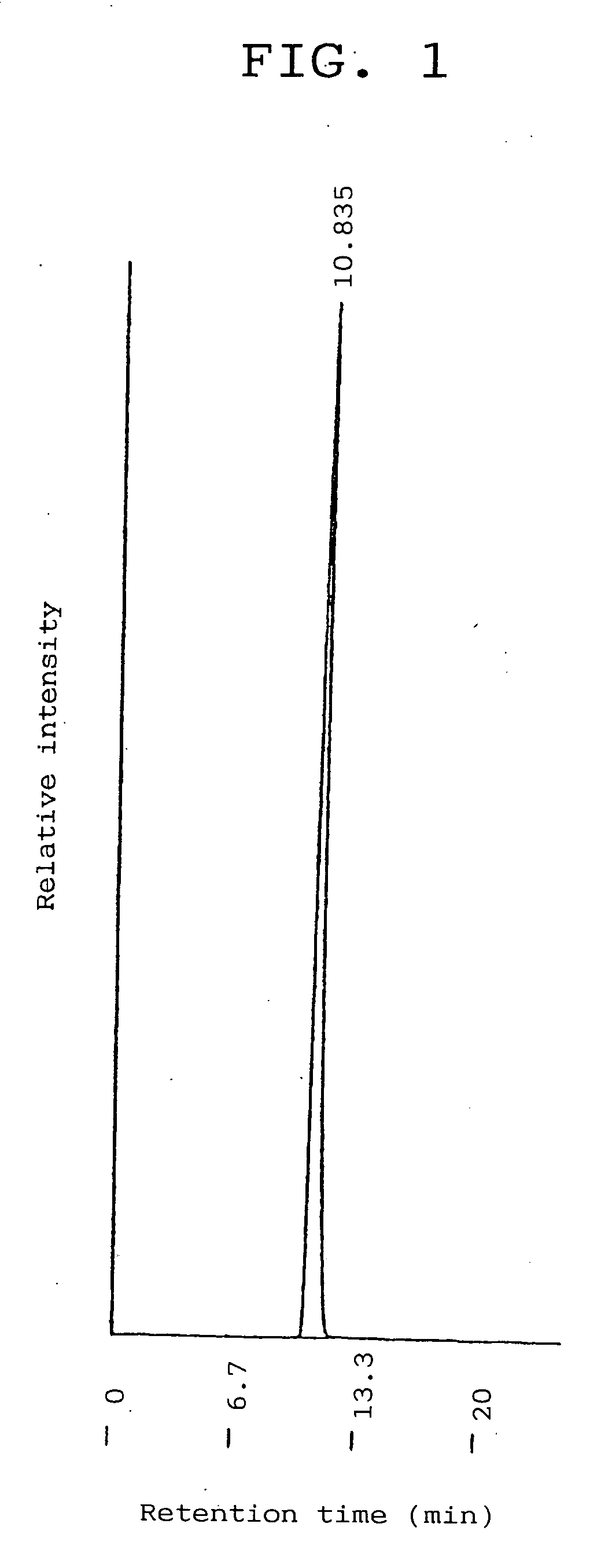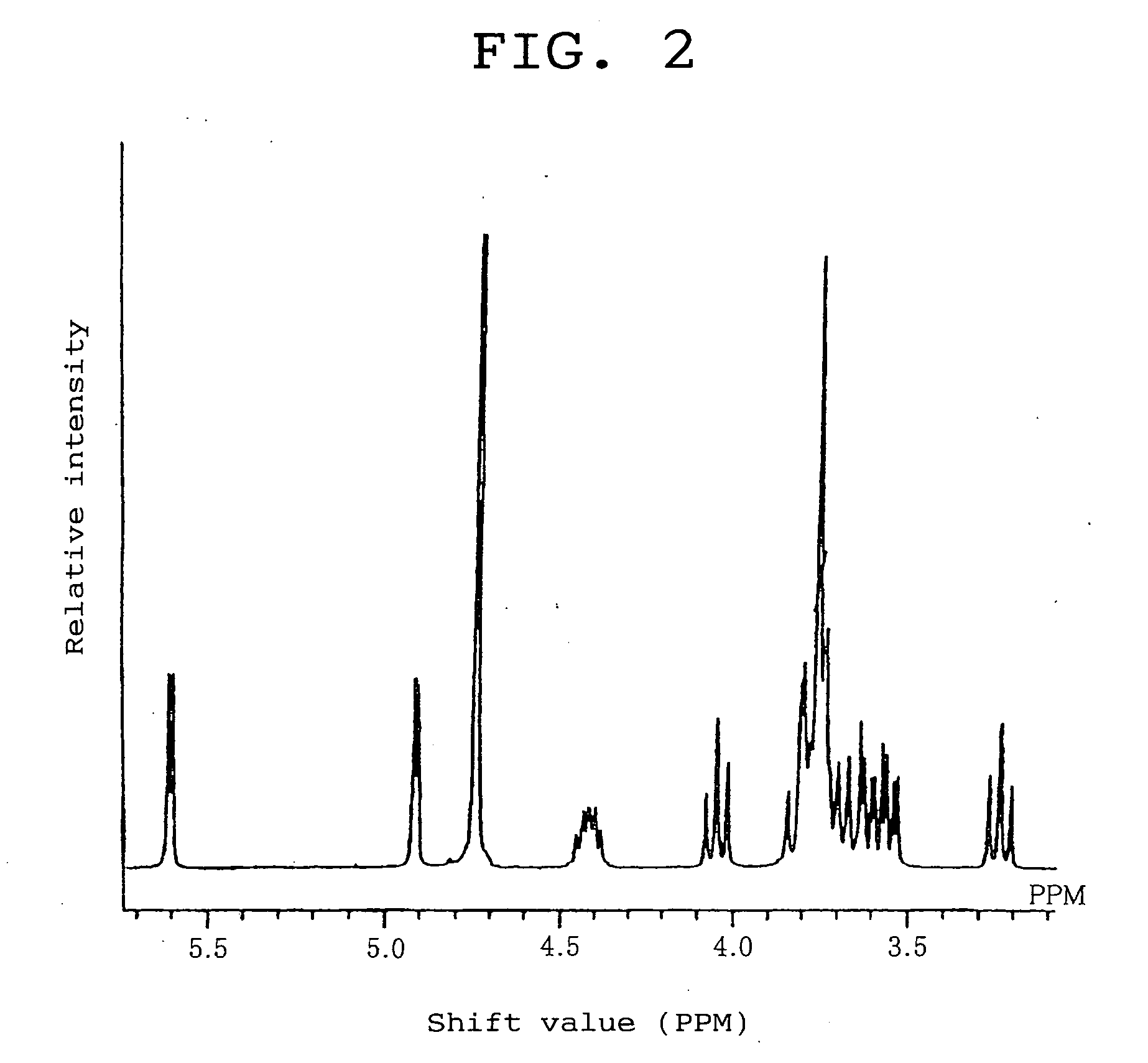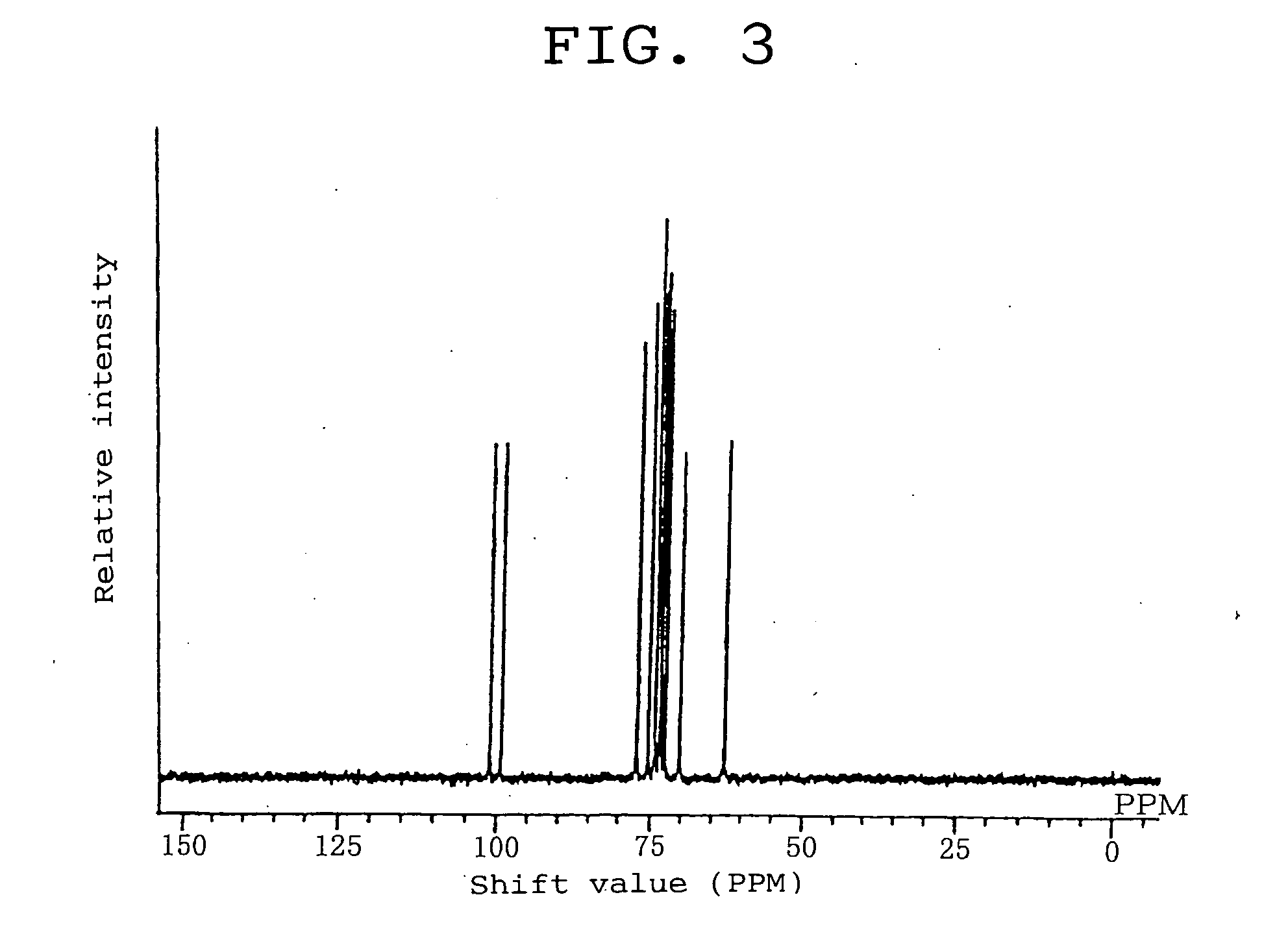Dehydrating agent and method for dehydrating moist article using the agent and dehydrated article obtained by the method
a technology of moist articles and dehydrating agents, which is applied in the field of dehydrating agents, can solve the problems of poor dehydrating power, poor preservation and still remains anxiety about the stability of dehydrated products when preserved, and achieves satisfactory dehydrating ability, satisfactory flavor, and facilitate the production of dehydrated products.
- Summary
- Abstract
- Description
- Claims
- Application Information
AI Technical Summary
Benefits of technology
Problems solved by technology
Method used
Image
Examples
experiment 1
Preparation of Cyclotetrasaccharide from Culture
[0097] A liquid culture medium consisting of 5% (w / v) of “PINE-DEX #1”, a partial starch hydrolysate commercialized by Matsutani Chemical Ind., Tokyo, Japan, 1.5% (w / v) of “ASAHIMEAST”, a yeast extract commercialized by Asahi Breweries, Ltd., Tokyo, Japan, 0.1% (w / v) of sodium dihydrogen phosphate, dodecahydrate, 0.06% (w / v) of magnesium sulfate, dodecahydrate, and water was placed in a 500-ml Erlenmeyer flask in an amount of 100 ml, sterilized by autoclaving at 121° C. for 20 min, cooled, and then seeded with Bacillus globisporus C9 strain, FERM BP-7143, followed by culturing under rotary-shaking conditions at 27° C. and 230 rpm for 48 hours and centrifuging the resulting culture to remove cells to obtain a supernatant. The supernatant was autoclaved at 120° C. for 15 min and then cooled, and the resulting insoluble substances were removed by centrifugation to obtain a supernatant.
[0098] To examine the saccharides in the resulting ...
experiment 2
Structure Analysis of Cyclotetrasaccharide
[0102] Fast atom bombardment mass spectrometry (called “FAB-MS”) on a non-reducing saccharide, obtained by the method in Experiment 1, clearly detected a proton-addition-molecular ion with a mass number of 649, revealing that the saccharide had a mass number of 648.
[0103] According to conventional manner, the saccharide was hydrolyzed with sulfuric acid and analyzed for sugar composition on gas chromatography. As a result, only D-glucose was detected, revealing that the saccharide tested was composed of D-glucose molecules. Based on the data and the above mass number, the saccharide was estimated to be a cyclotetrasaccharide, composed of four D-glucose molecules.
[0104] Nuclear magnetic resonance analysis (called “NMR”) on the saccharide gave a 1H-NMR spectrum in FIG. 2 and a 13C-NMR spectrum in FIG. 3, and these spectra were compared with those of authentic saccharides, revealing that they were coincided with a non-reducing cyclic saccha...
experiment 3
Production of α-Isomaltosylglucosaccharide-Forming Enzyme from Bacillus globisporus C9 Strain
[0105] A liquid culture medium consisting of 4.0% (w / v) of “PINE-DEX #4”, a partial starch hydrolysate commercialized by Matsutani Chemical Ind., Tokyo, Japan, 1.8% (w / v) of “ASAHIMEAST”, a yeast extract commercialized by Asahi Breweries, Ltd., Tokyo, Japan, 0.1% (w / v) of dipotassium phosphate, 0.06% (w / v) of sodium dihydrogen phosphate, dodecahydrate, 0.05% (w / v) magnesium sulfate, heptahydrate, and water was placed in 500-ml Erlenmeyer flasks respectively in an amount of 100 ml, sterilized by autoclaving at 121° C. for 20 min, cooled, and then seeded with a stock culture of Bacillus globisporus C9 strain, FERM BP-7143, followed by culturing under rotary-shaking conditions at 27° C. and 230 rpm for 48 hours for a seed culture.
[0106] About 20 L of a fresh preparation of the same liquid culture medium as used in the above seed culture was placed in a 30-L fermentor, sterilized by heating, ...
PUM
| Property | Measurement | Unit |
|---|---|---|
| temperature | aaaaa | aaaaa |
| temperature | aaaaa | aaaaa |
| temperature | aaaaa | aaaaa |
Abstract
Description
Claims
Application Information
 Login to View More
Login to View More - R&D
- Intellectual Property
- Life Sciences
- Materials
- Tech Scout
- Unparalleled Data Quality
- Higher Quality Content
- 60% Fewer Hallucinations
Browse by: Latest US Patents, China's latest patents, Technical Efficacy Thesaurus, Application Domain, Technology Topic, Popular Technical Reports.
© 2025 PatSnap. All rights reserved.Legal|Privacy policy|Modern Slavery Act Transparency Statement|Sitemap|About US| Contact US: help@patsnap.com



